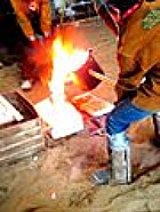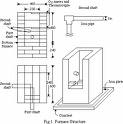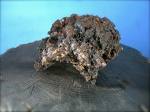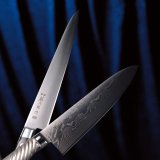
"Japanese Steel"
More Than Just Swords Or Knives... It's Pure Art.
What picture comes to your mind when you hear the words, Japanese steel? The first one that comes to mind is a Katana sword. What is commonly called, a Samurai Sword.
The second one that you may not give as much thought to is Japanese Stainless Steel.
I’m focusing on these amazing knives forged in Japan, many even having pattern welded blades or what we consider modern day Damascus steel.
I will go deeper into these two items on the other pages, but first I wanted to share some of the production techniques as related to Japanese Steel making.

"Production Of Specialized Japanese Steel"

As you may or may not know depending on the amount of content, you have read on this site, steel is simply iron that contains carbon.
If you add more carbon into the equation then the steel will be a harder grade. The trick is to get the right amount of carbon as the people of Damascus did, and keep it under control.
This is an art all by itself. You will only find one style of smelter for this art, left In Japan and it is called a tatara. The tatara is a clay vessel about 4ft tall and 12ft long and 4 ft deep. (Right, pouring blooms) (Below, a tatara drawing)

Originally, the word meant just the foot bellows but later came to be known as the entire furnace. This type of smelting is not used for the mass production of steel such as in the industrial sector. This style is generally preserved for the making of a sword commonly known as a Katana sword.
"There’s A Reason Why It Is So Great"
The steel that is used is extremely pure steel, what is called tamahagane. Tamahagane translated is “Jewel Steel” and is made from black sand. It requires 4-5 people to watch over that process of smelting tamahagane.
 After the furnace is at the right temperature, the satetsu is added, otherwise known as iron sand. Satetsu contains a lot less impurity. In particular, it contains very little Silicate. The structure of Satetsu is very solid and high in density. It is also called the White Cast Iron, as it appears to be white in color. From just looking at it, most people think it is silver.
After the furnace is at the right temperature, the satetsu is added, otherwise known as iron sand. Satetsu contains a lot less impurity. In particular, it contains very little Silicate. The structure of Satetsu is very solid and high in density. It is also called the White Cast Iron, as it appears to be white in color. From just looking at it, most people think it is silver.
Over the next 3 days, they will layer this with more charcoal and black sand. When the process is done they will have turned iron into steel and they will break the clay and take the steel bloom known as a Kera.
I will go over more of this information on sword making on the other page because there is a lot to cover. I want to touch on the Japanese Damascus Steel and Japanese stainless steel for a minute first. I will cover more detail on an additional page for those as well.
"Japanese Stainless Steel Knives"
The modern day Damascus or (pattern welded blade) is produced almost everywhere that you look and find an artist that is bladesmithing. The Japanese have been doing this art for about as long as the people Of Damascus were, their art was lost as well. Perhaps they were all using the same mine, not sure of that one, but what I do know is that they make one heck of a blade over there.

When we talk about the Japanese stainless steel knives, as well as the Japanese Damascus knives we are talking about genuinely great quality.
The Damascus style of knife seems to hold a better edge due to its twisting and layering during the forging process, which is also what, gives it that outstanding look and feel.
Any cutlery knifes that you purchase, made from Japanese steel are going to be as good as, what you are willing to pay for them.
Let’s click over to the other pages that I have put together covering these 2 items a bit further and see if we can get you a little more educated about your product so you can get back to ordering what it was you came here in search of. If you need any further assistance than what we give here, please contact us. Hope you find what you are looking for!
Japanese Steel To Home Page
Japanese Knives
Katana Swords